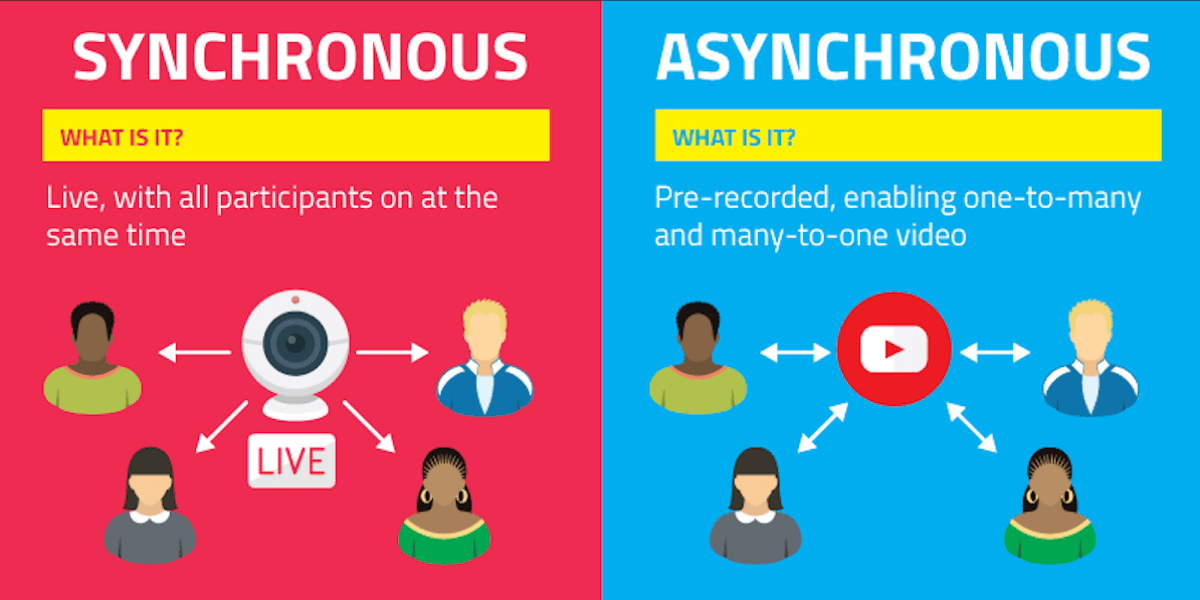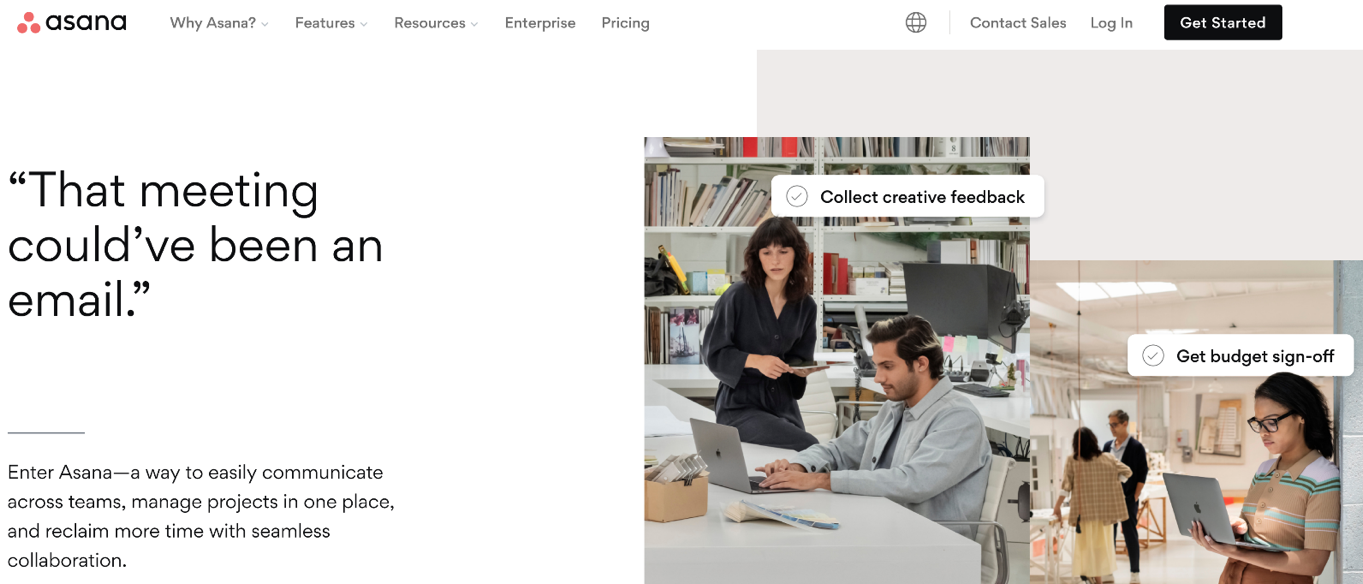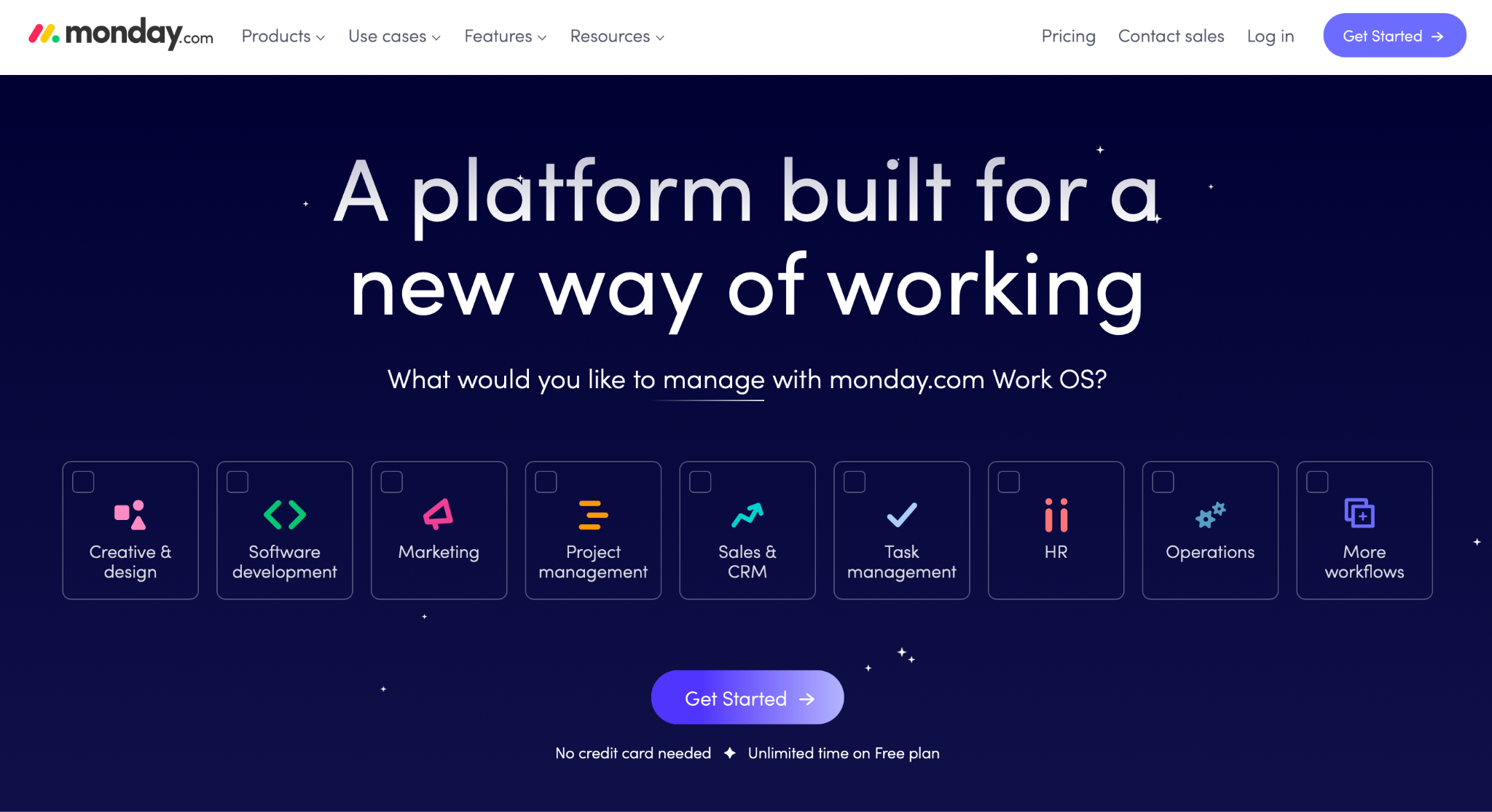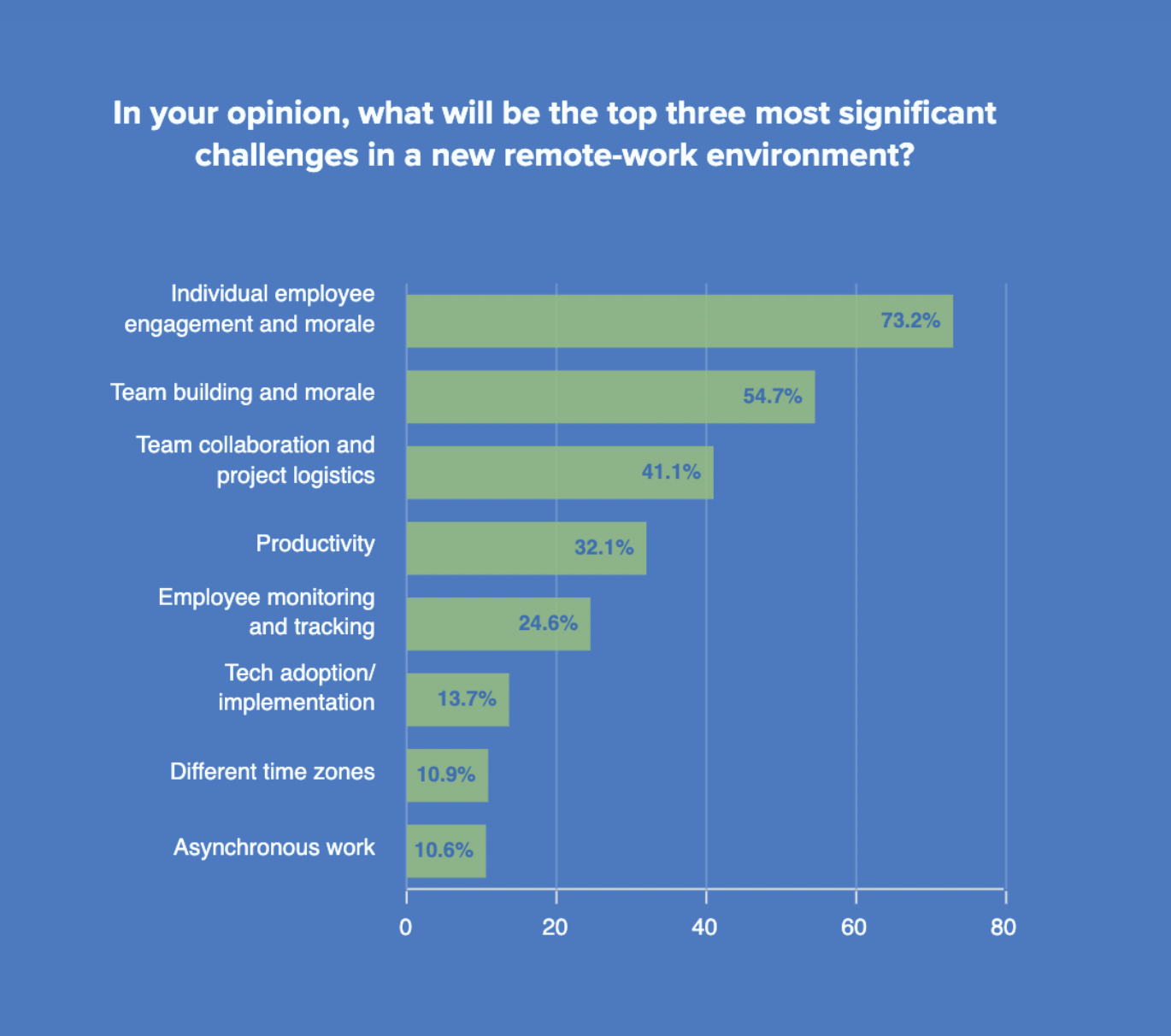For job seekers
For companies
For job seekers
For companies
Updated May 25, 2023 by Axel Grubba
Ready to find a remote job? Or expand your remote business?
Browse jobsEverything You Need to Know About Asynchronous Working
Asynchronous (also known as async) means not present simultaneously.
In a work context: this refers to a system of working where not all team members need to work online at the same time. This means employees have the flexibility to schedule tasks around them and work at times when they perform better and are most productive.
For this to work, employees must have access to all the relevant shared information from any location, ensuring the quality meets the requirements and they complete work within an agreed deadline. The result: members are more autonomous and productive.
Since the pandemic, the change in how businesses have operated has steadily given rise to work-from-home options. When people have the chance to work flexibly, 87% take it. In other words, workplaces must modernize and utilize asynchronous work correctly to maintain seamless operations.
If you’re unsure what your next steps are, this guide will help unpack and answer all of your questions about asynchronous working.
Perhaps the primary benefit of asynchronous work is how it helps streamline communication to focus on what’s necessary and critical to operations.

Source: Gathervoices
When you’re able to pre-plan your messages, you eliminate unnecessary communication: no more water-cooler chats, office drama with colleagues, and micromanagement from bosses. If the employer fosters good async processes from the top down, both parties reap the benefits.
Here are the primary communication methods for asynchronous work:
Team members are encouraged to go at their own pace with the option to take on more work upon completing tasks if they wish.
Asynchronous work enables employees to take breaks when it suits them, unlike synchronous work. This helps reduce time wasted when a team member is off work, which inevitably leads to halting projects to accommodate their absence.
The tools used for asynchronous work, such as project management or communication software, also ensure that the data necessary to keep the workstream going is accessible so everyone can keep up-to-date at any time.
On the flip side, traditional office work (synchronous) follows set hours and specifies designated breaks. While it may not necessarily suit everyone’s working style, individuals who prefer a set schedule and feel energized when they interact with a constant stream of people tend to thrive.
You can manage communication in synchronous work via:
That said, if used sparingly, there is a place for synchronous communication methods in remote and asynchronous work.
Video conferencing and phone calls should be used as a last resort or in specific scenarios such as interviews, 1:1s, and performance reviews. The meetings need to be planned, brief, and considerate of the team or individual’s time.

Asynchronous empowers more autonomy in the workplace by encouraging employees to be smart about time management, and personal motivation, as well as encouraging independent thinking.
Employees take charge of their work and develop more problem-solving skills, relying on reading comprehension and analytical thinking. As a result, accomplishments tend to boost personal confidence in their own skills and capabilities.
If an employee chooses to take on more or fewer tasks, they are at liberty to do so. We all have days where we feel stuck, but with asynchronous work, you can make up for it as long as you plan and manage your time well.
Partnerships, business collaborations, and freelance or contract workers are easier to manage with asynchronous work.
Remote working has made it easier to expand a company’s talent pool, allowing businesses to hire and retain employees around the world. While this allows new perspectives and ideas to be introduced, working across different time zones can be challenging.
Thankfully, global collaboration facilitated by the right technology and tools can make it possible to enjoy the benefits of a global workforce despite the logistical challenges. Setting up an asynchronous working system lets your team access relevant information, watch meeting recordings, and update work at any time from most devices, no matter where your employees are in the world.
Consider the amount of time it takes to commute to and from work—around 54 minutes—and factor in how flexible working schedules facilitate better productivity; according to the Gartner 2021 Digital Worker Experience Survey, 43% of respondents said that flexible schedules are the key reason for their increased productivity.
Bear in mind that in synchronous workplaces, only three hours in an eight-to-ten-hour shift get used productively. Async employees have the flexibility to work during the night or whenever inspiration takes hold, and they don’t have to worry about commuting. All this time can be spent focusing on work instead.
Consequently, you can measure work by the results and quality of output delivered instead of rewarding the hours spent on producing it.
An asynchronous culture eliminates the artificial urgency and social pressure to get the work done within set hours. As a result, people feel less stressed and more appreciated for the effort that they’re putting in towards their job.
It also cuts out unhealthy comparisons over how many hours other colleagues have worked, especially when you factor in the fact that employees aren’t robots and tend to work at varying paces.
Ultimately, it helps boost morale around the workplace.
Companies fully committed to remote and asynchronous working give their workers the room to think clearly and prioritize their health and well-being by giving their team members autonomy and trusting them to get the job done.
In a world of instant gratification and a cycle of instantly replying to messages and notifications, blocking out unnecessary noise and distractions is necessary—especially given how difficult it is to delineate between work and personal time when working remotely.

Documentation is at the heart of asynchronous work, so focusing on a unified method in your organization is the first step.
If communication is documented and accessible online, everyone can refer back to one place to find the answers they need.
At the same time, note that documentation is going to constantly evolve in your company as you and your team will often find different approaches and implement improvements as you go along. It’s wise to see it as an asset: an ongoing process that updates throughout your journey instead of a chore.
Cloud collaboration tools like Google Docs, Google Drive, and interactive communication tools enable remote workers to share ideas together and physically access work from anywhere.
Every business, regardless of size, will experience difficulties when it comes to keeping track of information across multiple web-based platforms.
When this happens, communication, documentation, and output tend to suffer when everything is messy and uncoordinated; messages get missed, emails are left unanswered, and important subject matter fails to get discussed.
Thankfully, there are numerous tools available today that can help address such challenges. It’s a matter of finding what features will fit your organization’s needs seamlessly. For more information, you can find our written guides on the best management software for tasks and projects this year.
Finally, if you work asynchronously, take note that there will be instances when work tends to trickle in. For instance, work can be quite slow after you and your team have just completed a task or project and you’re still waiting for feedback.
This is why a take-action approach is essential to effective asynchronous employees. When you are empowered to make informed decisions that benefit the business as a whole, it’s easier for employees to take initiative.
However, this also entails breaking tasks into smaller steps so progress can easily be tracked and the next steps can be determined. This can help establish a more predictable cycle that team members can follow regardless if they have management constantly supervising their progress or not.

Source: Workable
There are certain behaviors that work in traditional synchronous work that needs to be unlearned when you start following an asynchronous system.
For instance, organizations that often work remotely rely a lot on online meetings as a way to collaborate. As a result, employees tend to feel like they have to work longer due to too much time spent on video conferences, answering emails, and replying to messages that eat into their progress.
Sometimes, meetings set don’t match your team member’s schedules, and they end up attending in their free time, as they feel pressured to do so. Remember that work meetings should only get set with a plan, such as a proposal, or when there’s misinterpretation with async communication.
Don’t forget 1:1s to see how people are coping, as well. Creating an open work culture where they can freely talk about burnout, for instance, and be encouraged to take a holiday, as opposed to being reprimanded, develops trust and loyalty, and overall, better working relationships.
Teaching your employees to set clear boundaries between work and home life is important, especially with remote work, so individuals can remember what they need to do, focus and prioritize.
Remote workers can suffer from feelings of loneliness and isolation. You can mitigate this with good planning and management. The employer should organize optional drop-in team coffee chats (that are unrelated to work) at various times, and team bonding exercises that can make your employees feel more connected and appreciated.
Finally, another overlooked area is equipment: if your team doesn’t have suitable computers or tablets with the specs and software needed, this will slow everyone down. Having a plan B is helpful here, such as discounts or free access to a remote hub—if their home gets too busy or there’s a power outage, they have another option available.
Remote working is here to stay. It’s worth investing in asynchronous solutions and healthy working practices so you retain your employees and create a flexible work-life balance that suits the new workforce for years to come.